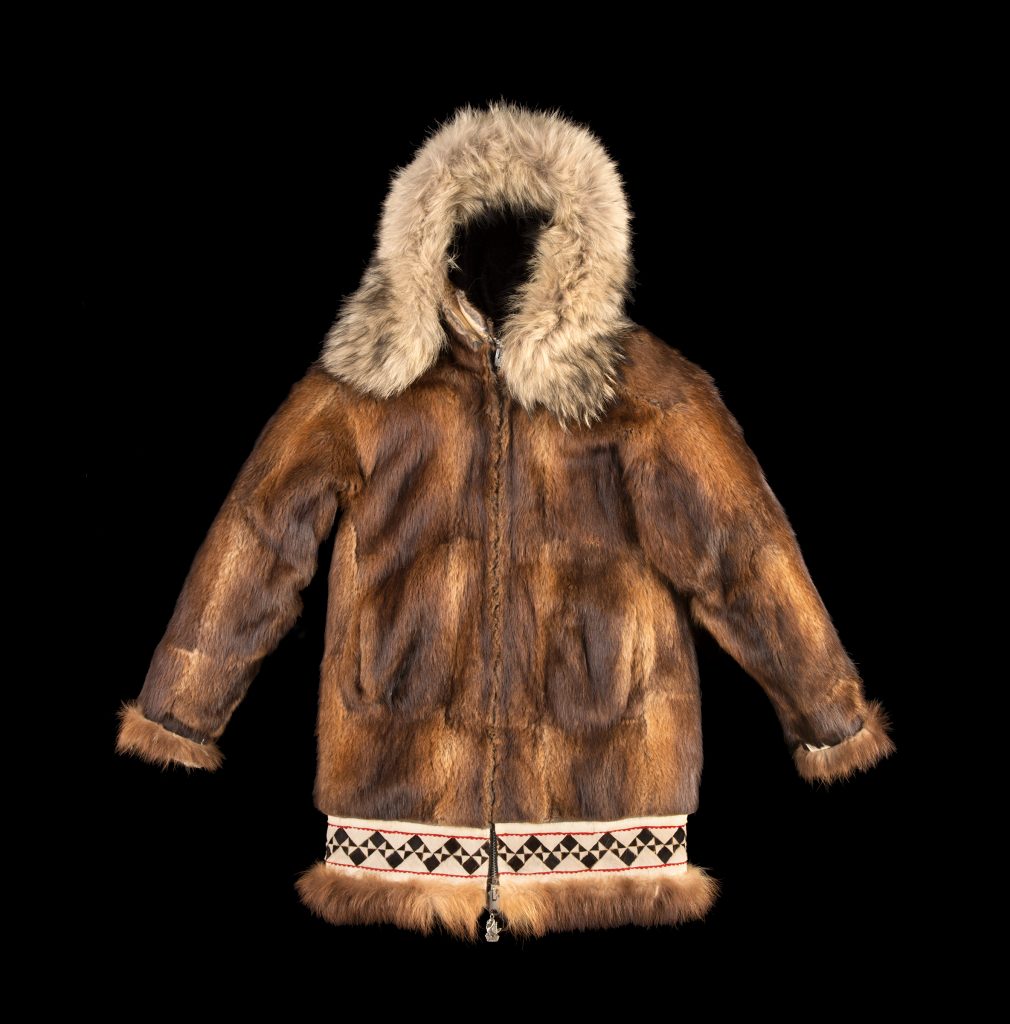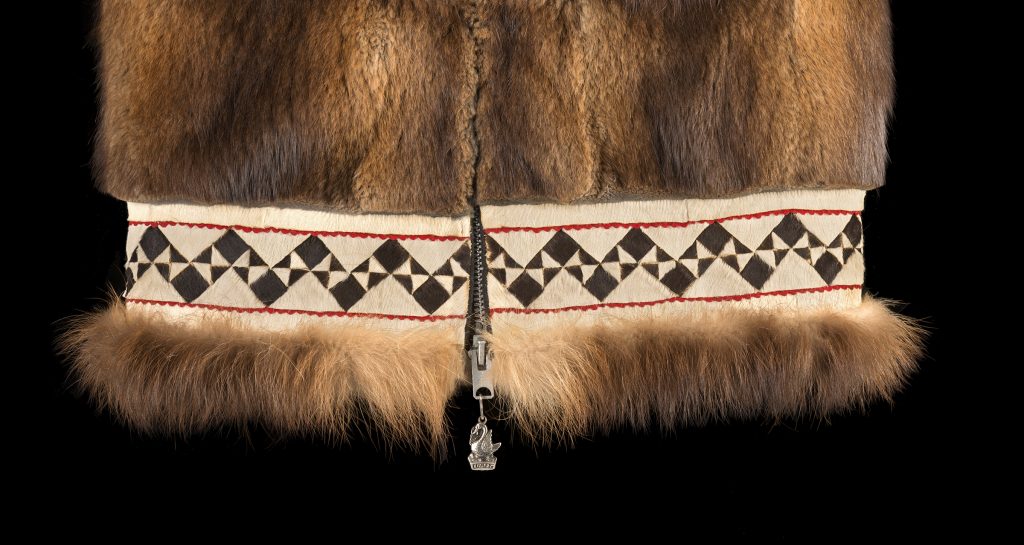Forget Not the Mighty Zipper
The Denver Museum of Nature & Science (DMNS) curates a beautiful fur parka from Barrow, Alaska. The body and hood are made of muskrat fur; the hood is trimmed with wolf fur. Wolverine fur forms a hem around the base, above which is a decorative geometric design made of dark-brown seal fur, red linen, and off-white ermine fur. I regularly show the piece during tours of the DMNS collections; visitors marvel at its elegant design and beautiful functionality.
Given that most museum guests have never seen such a garment, they often ask how old it is. Before telling them that the manufacture date is believed to have been in the mid-1960s, I point out that we know the parka must have been made after 1893. Indeed, we can go further and state conclusively that it postdates 1917.
How can we be so certain? The left and right sides of the parka are fastened in the front by a metal zipper, an invention first patented in 1893.
In the early 1890s, the inventor Whitcomb L. Judson designed and built a device awkwardly named a “clasp locker.” Much like zippers still in use today, Judson’s device used a mechanical slide to bring together two rows of joinable elements. Unlike modern zippers, the joinable elements in Judson’s device consisted of hooks and eyelets. A row of metal hooks would be sewn onto the edge of one side of a textile; a row of metal eyelets would be sewn onto the edge of the opposing side of the textile. A mechanical slide then united the hooks and eyelets in sequence. Judson’s clasp locker was a precursor to the modern zipper. (Ironically, while hooks and eyelets are no longer used in zippers, they constitute the basic elements of space-age Velcro—that most modern of fasteners, which is itself a fabric.)
Judson lacked the business acumen to see his invention through to profitable manufacture, distribution, and sale. So he partnered with businessmen Harry Earle and Lewis Walker to found the Universal Fastener Company, which became Talon International Inc., the dominant zipper manufacturer in the mid-20th century. They introduced Judson’s clasp locker to the American public at the World’s Columbian Exposition in Chicago in 1893, apparently to little fanfare, despite the 27 million people (half the United States’ population at the time) who attended.
In the mid-1910s, Swedish-American electrical engineer Gideon Sundback improved the Judson design by using rows of uniformly sized metal teeth instead of hooks and eyelets. He also increased the density of the conjoining teeth from roughly four to about 10 per inch, making the resulting attachment stronger and less likely to pull apart. Sundback patented his new design in 1917; it is essentially the design still in use today. The DMNS parka has a Sundback-style Talon zipper with metal teeth, so we know the parka was made after 1917. (Astute readers will note that the zipper could have been added to the parka sometime after its original manufacture, but there is no evidence for such an alteration.)
Few of us give zippers much thought unless they fail or we inadvertently catch a body part while closing one. Look around, however—zippers are everywhere. Even today, in an age of Velcro, elastic, and spandex, zippers adorn garments ranging from pants and skirts to boots and jackets. Even better, they can be found on myriad containers such as luggage, backpacks, and wallets. (What would camping be like without zippers? Your tent would be bug central.) Although zippers did not replace buttons, snaps, clasps, or other kinds of fasteners, I’m hard-pressed to think of another technological improvement for clothing that proved so revolutionary and yet is so underappreciated.
Indeed, when one ponders modern conveniences, high-tech devices like cell phones, GPS units, iPads, and other gadgets usually come to mind. (A smart thermostat anyone? Really?) Mundane objects like combs, paper clips, and zippers usually escape notice. But their technological elegance has led to a remarkable degree of staying power even in the face of rapid technological change.
As an archaeologist, I spend an inordinate amount of time thinking about what life was like eons ago. Given that we have circumstantial evidence of sewn clothing being used by humans as far back as the last ice age—more than 12,000 years ago—the nearly 100-year history of the Sundback zipper is but a flash in the pan by comparison. Nevertheless, I continue to admire the zipper for solving a problem as old as clothing itself.



























